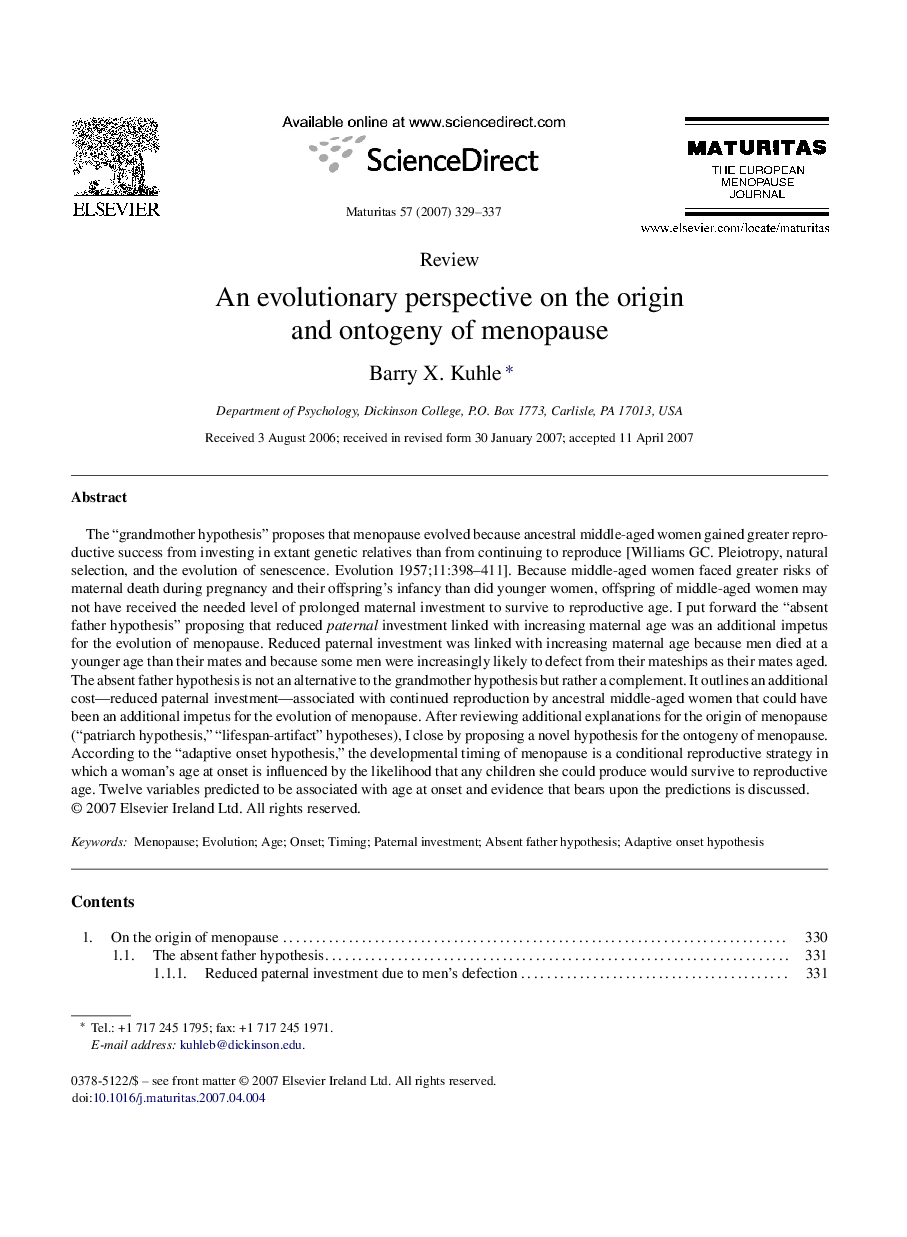| کد مقاله | کد نشریه | سال انتشار | مقاله انگلیسی | نسخه تمام متن |
|---|---|---|---|---|
| 1918786 | 1047974 | 2007 | 9 صفحه PDF | دانلود رایگان |

The “grandmother hypothesis” proposes that menopause evolved because ancestral middle-aged women gained greater reproductive success from investing in extant genetic relatives than from continuing to reproduce [Williams GC. Pleiotropy, natural selection, and the evolution of senescence. Evolution 1957;11:398–411]. Because middle-aged women faced greater risks of maternal death during pregnancy and their offspring's infancy than did younger women, offspring of middle-aged women may not have received the needed level of prolonged maternal investment to survive to reproductive age. I put forward the “absent father hypothesis” proposing that reduced paternal investment linked with increasing maternal age was an additional impetus for the evolution of menopause. Reduced paternal investment was linked with increasing maternal age because men died at a younger age than their mates and because some men were increasingly likely to defect from their mateships as their mates aged. The absent father hypothesis is not an alternative to the grandmother hypothesis but rather a complement. It outlines an additional cost—reduced paternal investment—associated with continued reproduction by ancestral middle-aged women that could have been an additional impetus for the evolution of menopause. After reviewing additional explanations for the origin of menopause (“patriarch hypothesis,” “lifespan-artifact” hypotheses), I close by proposing a novel hypothesis for the ontogeny of menopause. According to the “adaptive onset hypothesis,” the developmental timing of menopause is a conditional reproductive strategy in which a woman's age at onset is influenced by the likelihood that any children she could produce would survive to reproductive age. Twelve variables predicted to be associated with age at onset and evidence that bears upon the predictions is discussed.
Journal: Maturitas - Volume 57, Issue 4, 20 August 2007, Pages 329–337